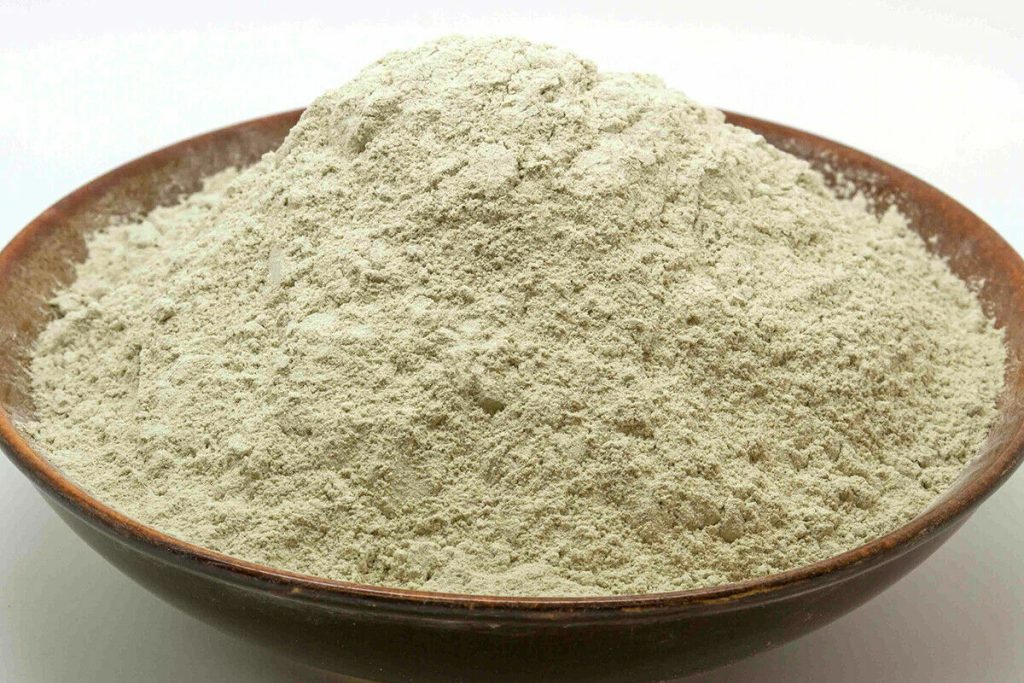High value-added deep processing and utilization of bentonite

At present, the montmorillonite content of industrial bentonite primary processed products is generally 40%-65%, and it also contains certain clays (illite, kaolinite, halloysite, chlorite, allophane, etc.) and non-clays (zeolite, quartz, cristobalite, feldspar, calcite, pyrite, rock debris, iron oxides and organic matter).
The premise of high value-added deep processing and utilization of bentonite is to use mineral processing and purification technology to increase the montmorillonite content to more than 80%. The purified product is called montmorillonite.
Montmorillonite is a natural layered mineral with a huge specific surface area and non-uniform charge distribution. It has good water absorption, dispersion, dissociation, thixotropy, lubrication, adsorption, exchange and other abilities. It can be sold directly as a montmorillonite-based raw material, or it can be further inorganically or organically modified to produce catalyst carriers, inorganic gels, organic bentonite, organic/inorganic nanocomposites, lithium-based bentonite and other high value-added products.
1. Human medicinal montmorillonite
The application of montmorillonite in the pharmaceutical industry can be divided into two categories:
Medicinal raw materials: digestive tract mucosal protective agents, bactericidal and antibacterial agents, etc.
Medicinal excipients: excipients, suspending agents, filter agents, etc.
In medicine, montmorillonite stomach medicines are currently used in large quantities, and their preparations have been widely used in clinical practice. The montmorillonite stomach medicine preparations that have been developed successively include powders (high-purity montmorillonite, excipient-dispersed montmorillonite), granules, gels, suspensions, etc.
2. Montmorillonite for veterinary medicine and animal health care
Before using montmorillonite, it must be confirmed that it is non-toxic (arsenic, mercury, lead, and cristobalite do not exceed the standard). Its mechanism of curing and maintaining health for animals is similar to that of human stomach medicine, but it needs to be specially formulated and used for the prevention and treatment of diarrhea, dysentery, hemostasis, anti-inflammatory and other diseases in animals. It can remove mold and heavy metals in feed without toxic side effects; it also has a strong adsorption effect on heavy metals, harmful gases, bacteria, etc. in the digestive tract, thereby playing a role in animal health care.
3. Montmorillonite for feed ingredient enhancers
Montmorillonite has good adsorption, swelling, dispersion and lubricity, and can be used as an animal feed additive.
4. Montmorillonite for feed mildew inhibitors
Montmorillonite acts as a carrier in feed mildew inhibitors. Montmorillonite (mildew remover) is used to remove mycotoxins from feed and raw materials. Whether it is in vitro evaluation or animal testing, its effect is unquestionable.
5. Montmorillonite for dairy enhancers, etc.
Dairy farming is an important area of feed consumption. After adding montmorillonite to feed, the various macro and trace elements contained in it are components of enzymes, hormones and some bioactive substances in the cow’s body, which can activate the activity of enzymes and hormones in the body, improve the function of the body’s immune system, reduce feed consumption, enhance disease resistance and improve milk production performance.
6. Montmorillonite for cosmetics
Montmorillonite can effectively remove and absorb residual makeup, dirt impurities and excess oil in the skin texture, tighten overly coarse pores, accelerate the shedding and exfoliation of aging cells, dilute melanocytes, and improve skin color.
